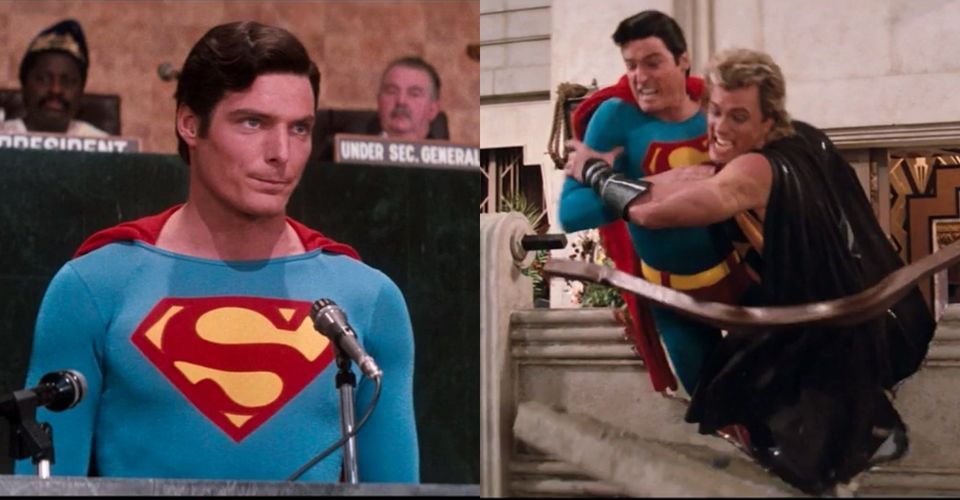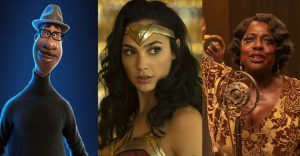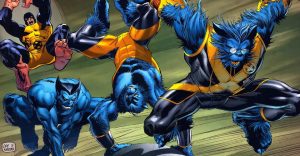10 Best Scenes In Superman IV: The Quest For Peace

After the failure of Superman III, star Christopher Reeve wasn’t too keen on returning to the franchise. However, he was enticed back with the promise of having a hand in developing the fourth film’s story. The result was a nuclear arms race-inspired tale about Superman ridding the world of nuclear weapons, a cause Reeve was passionate about at the time.
However, new producers took over the franchise and slashed the budget so the result was a very cheaply made Superman movie that left critics and audiences disappointed. Despite the fact that the movie’s production value is clearly lesser than the previous films, Superman IV is still an entertaining movie, with an interesting story that is better than its predecessor’s. And if audiences look past the poor production value, there is actually a good film in there.
10 Superman Museum

One of the bright spots of Superman IV is Gene Hackman’s performance as Lex Luthor because he seems to be having a wonderful time chewing the scenery. In one scene, he and his nephew, Lenny (Jon Cryer) visit a Superman exhibit at a museum.
While there, audiences get a glimpse of the world’s fascination with Superman to the point where he has his own exhibit that cleverly showcases his strength by having a strand of his hair hold up a thousand-pound load. However, Luthor then steals the strand of hair by snapping it with bolt cutters.
9 Clark Returns To Smallville

Some of the best scenes in the Superman movies are the Smallville scenes. In Superman IV, Clark returns home since he has inherited the Kent farm but a developer wants to buy it and use the land to build a mall. The scene features a funny dialogue exchange between the developer and Clark regarding a broken crib wherein he says that Jonathan Kent told him “Clark must have had a bad dream and kicked it.”
While this scene doesn’t add much to the story, it reflects another 1980s topical issue and that was midwest farms going under. What makes the scene even better is the inclusion of John Williams’ Smallville themes which will make any scene great.
8 Double Date

Part of Superman’s charm is his struggle to be two people: Clark Kent and The Man Of Steel. Lois Lane is in love with Superman and famously acts aloof around Clark. However, in Superman IV, the new Daily Planet editor, Lacy, has a crush on Clark and plans a double date between the two of them with Superman and Lois.
Of course, Superman can’t be in two places at once so the entire sequence features him having to balance being Clark and Superman for both women and hijinks ensue. While silly, it’s a great example of the classic Clark/Superman dynamic.
7 Superman Consults The Kryptonian Council

The Superman films were always unclear whether he was speaking to live people or recordings during his Fortress Of Solitude sessions, for example, in this scene he’s definitely conversing with live people despite the fact that they should all be dead. However, it’s a very interesting scene. Superman struggles with whether he should interfere with Earth’s problems and the council tells him not to, to find a more peaceful planet, and to not give humans false hope.
But of course, Superman interferes because he cares about Earth. This scene is an example of the film’s concept that unfortunately wasn’t used to its full potential, and that is if Superman is so powerful, why doesn’t he stop wars? Which the screenwriter saw as an allegory for the idea that if God is real, why does he allow tragedy and suffering to occur? Very powerful ideas went into this script that the actual film only hints at.
6 Superman’s United Nations Speech

The Superman franchise took a very political route with the fourth installment which reflected 1980s Cold War fears. Inspired by a little boy, Superman decides to rid the planet of all nuclear weapons. He strides into the United Nations building and speaks to its members about how the Earth is his new home and he can’t let it destroy itself much like Krypton’s elders did to Krypton.
It’s a refreshing scene for a superhero movie, as it tackles real-world problems. While the concept wasn’t explored to its full potential, Reeve’s performance in this scene is earnest and inspirational, which is everything that Superman should be.
5 Superman And Nuclear Man Battle

The battles between Superman and the Kryptonians in Superman II were mind-bogglingly good for the time. However, they’re considered tame by today’s standards set by movies like Man Of Steel, but audiences loved the knock-down, drag-out fights from that movie. This was something sorely lacking in Superman III but was thankfully brought back for Superman IV.
Superman battles the similarly powered Nuclear Man in the first of two epic battles. What’s fun about this battle is that Nuclear Man decides to inflict damage to the Great Wall of China and then erupts a volcano during it, which Superman quickly tries to fix in the middle of their fight.
4 Lois and Sick Clark

In his first battle with Nuclear Man, Superman gets scratched by his long nails which (for some reason) gives him radiation poisoning, and Superman becomes very sick. Superman disappears from the world and Lois visits Clark, who she finds to be sick as well. It’s a tender scene because Lois obviously knows that Clark is really Superman and she tells him what Superman means to everyone and hopes he returns soon.
The scene is fairly emotional for the two actors who have been a part of this series for ten years as audiences can feel their history together. This is a wonderfully performed scene in a film where everything else about it seems like zero effort was put in.
3 Dying Clark

As Superman continues to grow sicker due to the radiation poisoning, he decides to use the power from a Kryptonian energy module, which he can only use once, to bring back his powers. However, the scene where he uses it is quite interesting and perhaps even metaphorical. Audiences are shown that Superman has grown a lot weaker, grown much older, and has gray hair.
For many, this sick Superman subplot was viewed as an allegory for the AIDS crisis, which also was prevalent in the 1980s. However, the film’s screenwriter disputes that this was the intention, though he understands how it can be seen that way.
2 Moon Battle

The second big fight between Superman and Nuclear Man is more of what audiences want to see: two superhuman beings battling it out. The fairly long battle is a cosmic fight that is actually pretty cool.
Not only are the two gods vicious with one another but Superman cleverly uses Nuclear Man’s vulnerability to his advantage. The Sun powers Nuclear Man, so to defeat him, Superman moves the moon, causing an eclipse that successfully de-powers Nuclear man. However, moving the moon most likely caused some environmental problems on Earth that Superman seems to have neglected to take into consideration.
1 Superman’s Final Speech

In a final speech to the world, Superman admits that he couldn’t achieve what he wanted. He cannot end nuclear power without the help of the will of the people. He even quotes President Eisenhower, saying “There will be peace when the people of the world want it so badly that their governments will have no choice but to give it to them.” Acknowledging that the Earth is still young and there is more work to be done.
It’s a noble speech by a true superhero, unfortunately, it reflects a not fully realized concept, but respect must be given to Reeve and the filmmakers who tried, despite a budget-conscious studio. While Superman’s plan to rid the world of nuclear weapons failed, Superman IV successfully rid the world of a cinematic Superman for nineteen years. Following this film, studios considered superhero movies dead, however, two years later Tim Burton’s Batman would be released and changed the superhero movie genre forever.
About The Author

















